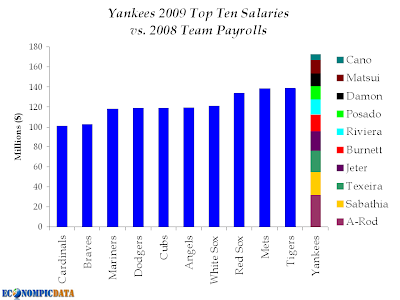Flying around the Internet and blogosphere is the Wall Street Journal's* ridiculous feature of Dr. Igor Panarin's prediction for the United States (interestingly enough, Bloomberg posted the same story to less fanfare a month ago):
Mass immigration, economic decline, and moral degradation will trigger a civil war next fall and the collapse of the dollar. Around the end of June 2010, or early July, he says, the U.S. will break into six pieces -- with Alaska reverting to Russian control.
So why can't I take Dr.
Panarin seriously, besides the fact that he also mentions Texas will be taken over by Mexico? The #1
Google result when searching 'Igor
Panarin' turns up this
russiahouse.org bio (bold mine):
Prof. PANARIN is the author of nine books, "Infowar and power”, “Infowar and world”, “Infowar and election”, and others, and of many political essays published in various journals.
And...
His main interests are history, philosophy, psychology, computer science, communication, election technology, conceptual problems of globalization, the theory and practice of infowar.
A quick search for 'information warfare' (i.e.
infowar) on
Wikipedia reveals
infowar includes:
Collection of tactical information, assurance(s) that one's own information is valid, spreading of propaganda or disinformation to demoralize the enemy and the public, undermining the quality of opposing force information and denial of information-collection opportunities to opposing forces.
Not that the United States isn't an expert at infowar (and at times has focused that expertise
directly on Russia), but it isn't typically this obvious.
Two initial questions; why is the Wall Street Journal focusing on an individual with an obvious agenda (i.e. selling books / gaining global attention)? Why is the author, Andrew Osborne (also known for his
insightful piece on Putin branded Vodka), doing his best to make Dr.
Infowar seem credible?
Prof. Panarin, 50 years old, is not a fringe figure. A former KGB analyst, he is dean of the Russian Foreign Ministry's academy for future diplomats. He is invited to Kremlin receptions, lectures students, publishes books, and appears in the media as an expert on U.S.-Russia relations.
And why did Mr. Osborne only once mention information warfare, but in that case make it nothing to do with one of his books or "hobby"?
In September 1998, he attended a conference in Linz, Austria, devoted to information warfare, the use of data to get an edge over a rival. It was there, in front of 400 fellow delegates, that he first presented his theory about the collapse of the U.S. in 2010.
Let me see if I can't wrap this whole thing up and come up with a conclusion...
- Dr. Panarin is an individual from a country (Russia) that is becoming more and more hostile towards the United States
- That same individual lists that his MAIN interests include THEORIZING AND PRACTICING INFORMATION WARFARE and is the author of nine books, of which at least three are written on the topic of INFORMATION WARFARE
- Yet he is listed as being a credible professor with inside ties to the Kremlin by the Wall Street Journal
The only conclusion is
Rupert Murdoch has done it yet again and will only stop when he completely ruins the credibility of the Journal (though I am optimistic he can't top what he and his son have done with the
NY Post... not that there's anything wrong with it).
It is truly frightening when a financial newspaper still thought by many as credible, is more focused on entertaining than informing.



















































